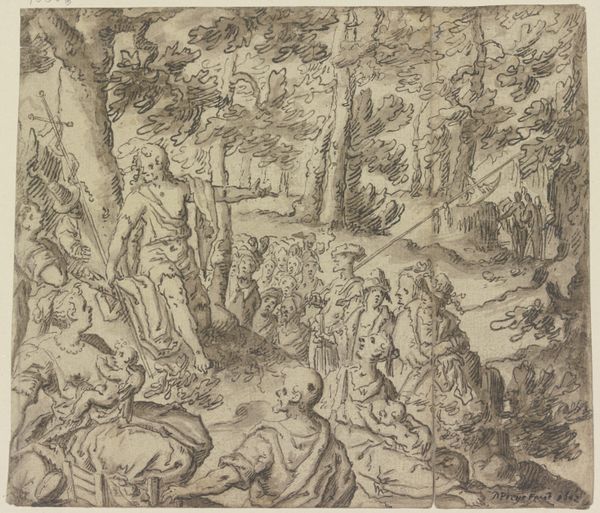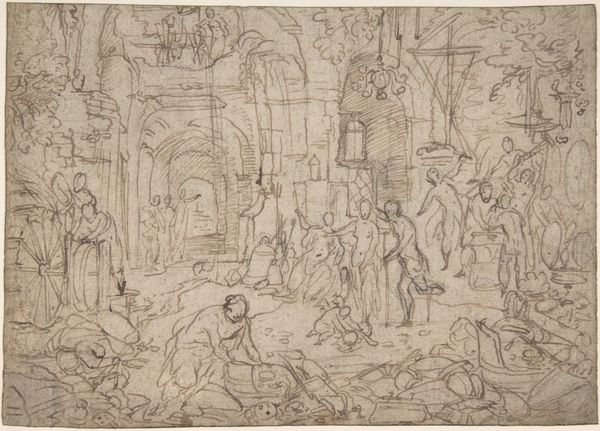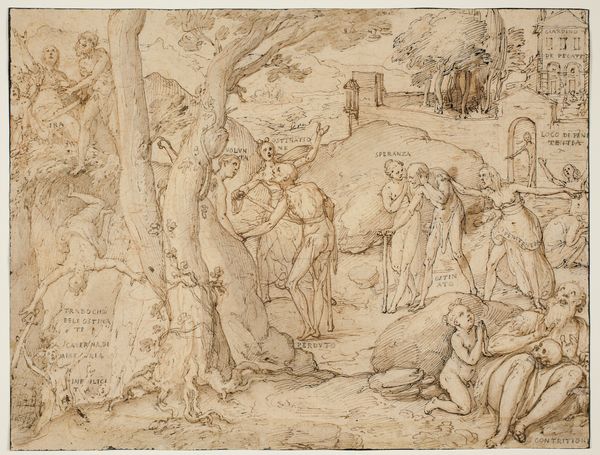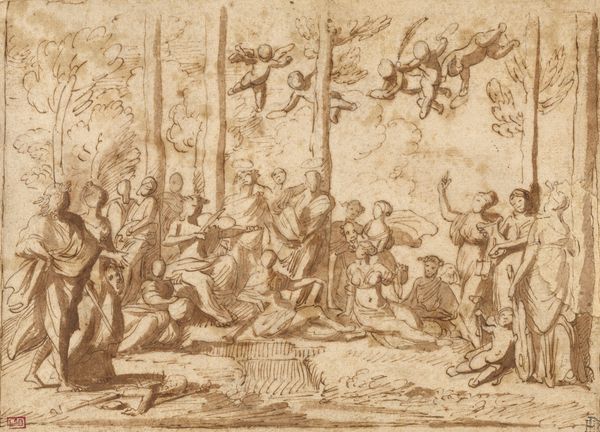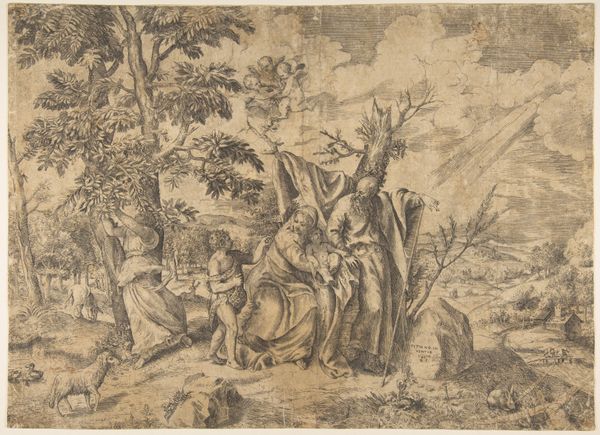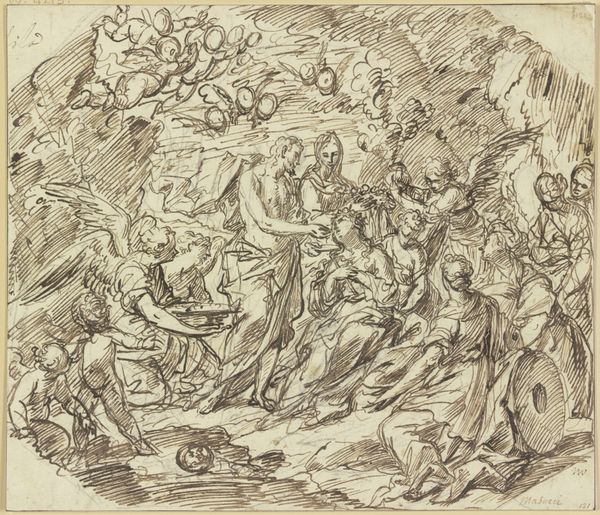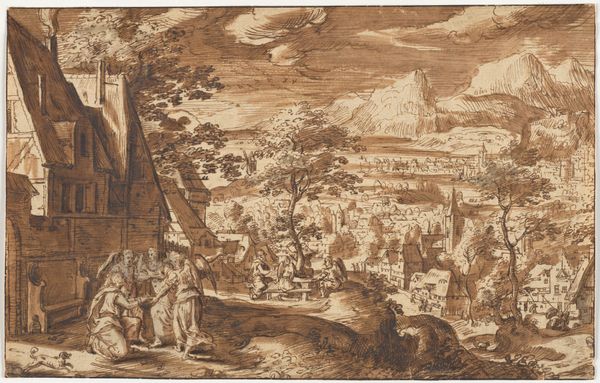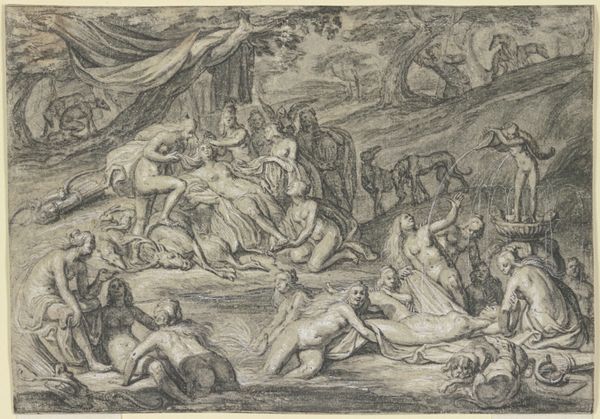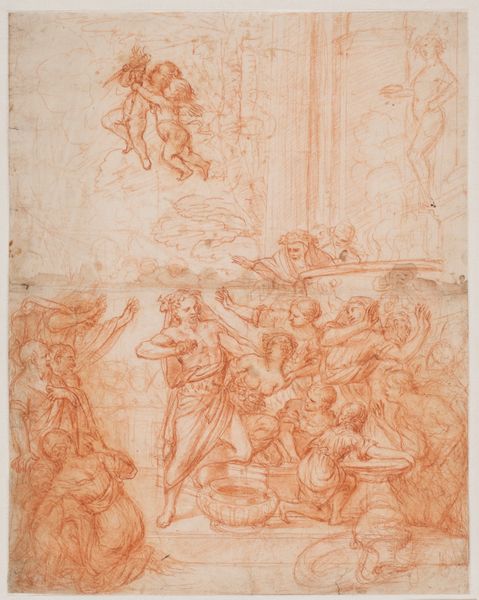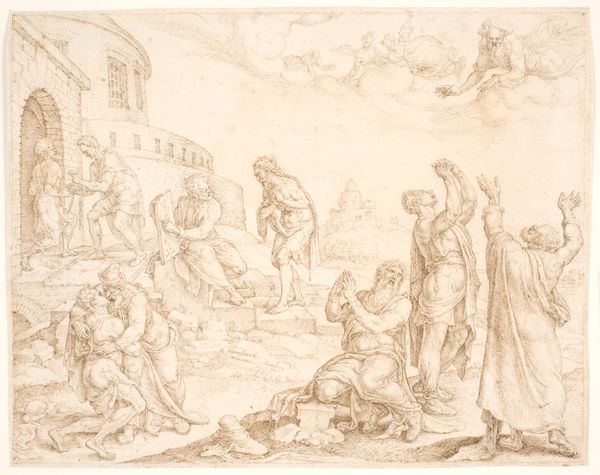
drawing, ink, pencil
#
drawing
#
landscape
#
figuration
#
ink
#
ancient-mediterranean
#
pencil
Dimensions: 106 mm (height) x 101 mm (width) (bladmaal)
Curator: This drawing, simply titled "Befolket arkadisk landskab med ruiner" or "Populated Arcadian Landscape with Ruins", comes to us from somewhere between 1505 and 1566. It resides here at the SMK, Statens Museum for Kunst. The artist remains anonymous. Editor: Immediately, the monochrome tones—that sanguine wash— lend it a feeling of faded memory, almost like archaeology itself. Are these figures contemplating what was or dreaming of what could be, or maybe both? Curator: I think there’s a real dialogue here between ruin and pastoral, that perhaps it shows humanity as just another part of that landscape, ephemeral amongst the more lasting architecture of empires past. They’re both existing and re-existing within the frame of one another. Editor: I can definitely feel that tension. There’s something radical about the way these bodies—mostly women, I notice— occupy this ruined space with such casual grace. Are they reclaiming it, perhaps even satirizing the masculine ideals of antiquity? Curator: Possibly! These spaces are filled with lounging, conversing, but always performing, like characters on an ever-present stage. This idea of “Arcadia”, I always found, is so steeped in fantasy, you know? As if this perfect existence was possible in the face of crumbling artifice. There’s a dark humor in there somewhere. Editor: I think it speaks to the enduring human desire to locate ourselves within narratives of decline and rebirth. The past isn't dead, as they say; it's not even past. It informs the present, as these figures are forever intertwined within that setting. There’s potential to explore a cyclical vision of history here. Curator: This artwork, although small, holds these immense ideas around longing for an imagined idyllic time. And yet we view them with eyes that understand ruin is never too far from reality. Editor: I find myself reflecting on how art gives us the space to reimagine our relationship with history—not as a linear progression, but as a continuous negotiation with what remains. Thank you for exploring this artwork with me.
Comments
No comments
Be the first to comment and join the conversation on the ultimate creative platform.
